Chad Mason Place
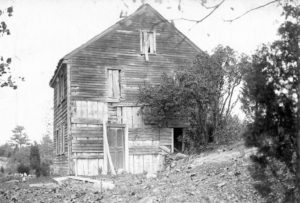
Location: undetermined, but probably in the area shown on this portion of the 1838 map.
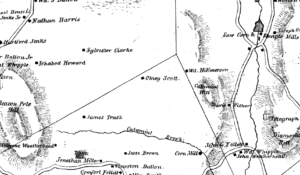
Noah eventually divided his land, giving the northeast portion to his sons Ziba (1765-1829) and Eliel (1767-1841). Eliel sold his portion to his brother Ziba, and moved to Vermont. Some years later, Ziba sold the farm to his wife’s brother, Chad Mason, and moved to Cumberland Hill, and after that, the farm was known as the Chad Mason Place. [1]
Major Sullivan Ballou, who served in the Civil War, and was the author of the famous letter featured in Ken Burn’s The Civil War, was Ziba’s grandson, born in Smithfield.
Preston Ballou
Preston Ballou (1794-1838)
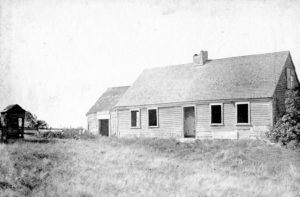
Location on 1838 map: on West Wrentham Road, south of Iron Rock Hill (see below)
Preston was the son of Eliel Ballou. He was born in Putney, VT, but at some point moved back to Cumberland. He was a stone-cutter and builder. [4]
Oliver Ballou Place
Oliver Ballou (1763-1843)
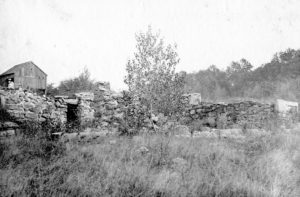
Location: The location of the photograph is not determined, though it is in the vicinity of Beacon Pole Hill. It seems likely that the house marked “Welcome Weatherhead” on the map below was the property Oliver exchanged with Welcome Weatherhead for his house on Mendon Road. There is an Oliver Ballou house marked on the 1838 map near the Albion Road, north of Ashton. It is possible that the property marked “Harvey Ballou” at the corner of Tower Hill Road and West Wrentham Road was part of Oliver’s original property, since Oliver had a son called Harvey.
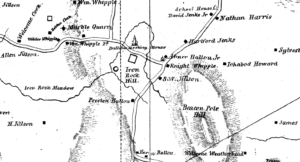
Noah gave the southeasterly portion of his farm to his son Noah Jr., and the remainder, including the house, to his son Oliver (presumably the western side of the farm). Oliver lived with his parents for a while, but eventually built another house for himself a short distance southward. He was a carpenter, and “executed much building” for the Slaters in Pawtucket and Slaterville, RI.
However, the neighborhood was too remote to suit him, so around 1815 he exchanged houses with Welcome Weatherhead, who had a house on the “Providence Road” (Mendon Road), a mile or two below Cumberland Hill. Around that time he went into business with his son Dexter, manufacturing cotton yarn in a small mill just northwest of Ashton on Mendon Road. Dexter Ballou (1789-1849) moved the business in 1817 to Woonsocket Falls. [3]
Oliver’s sons Dexter, George, and Hosea were early textile manufacturers in Woonsocket, and all owned and operated several mills. Dexter eventually ran the Social Mill and was the president of the Woonsocket Falls Bank. George was even more successful, and owned interests in the American Braid Works, the American Worsted Co., the Clinton Manufacturing Co., the Ballou Manufacturing Co., and the Globe Mill in the course of his career. [4]
- “An Elaborate History”, p. 209
- “An Elaborate History”, p. 511
- Ibid, p. 206-208
- Some information from “Woonsocket, My home town on the web”: http://www.woonsocket.org/georgeballou.html
This is the end of the exhibit. Thank you.